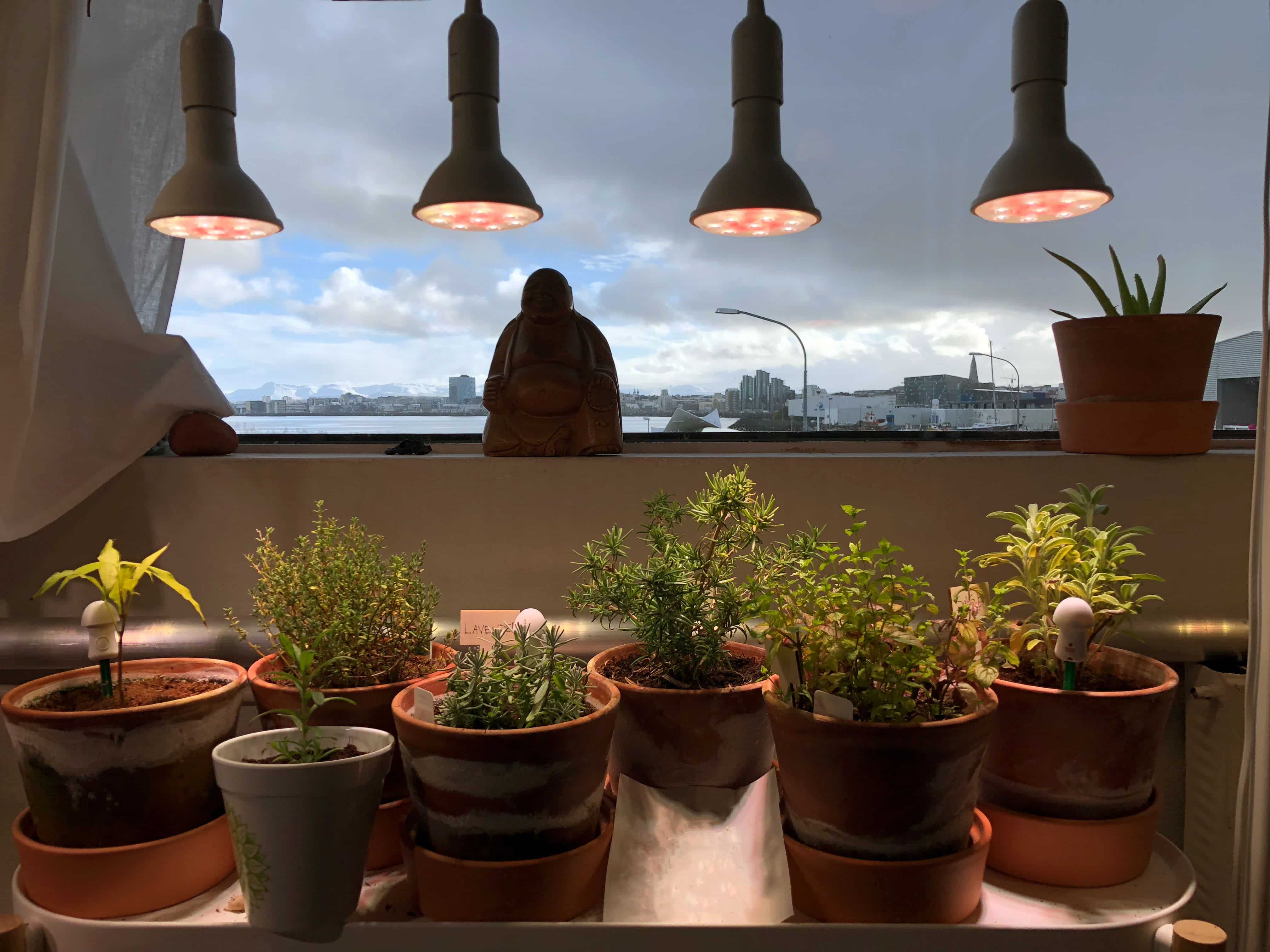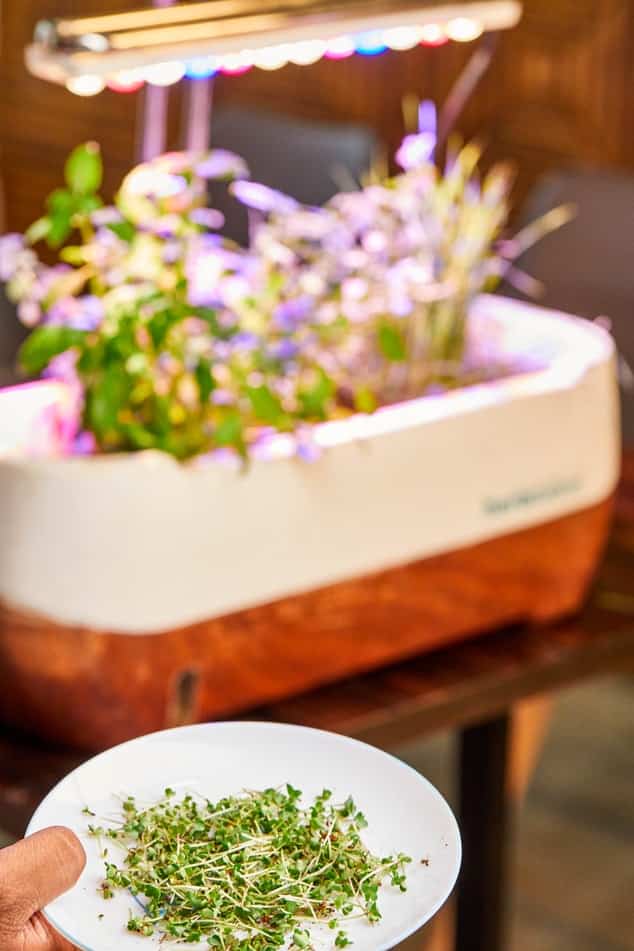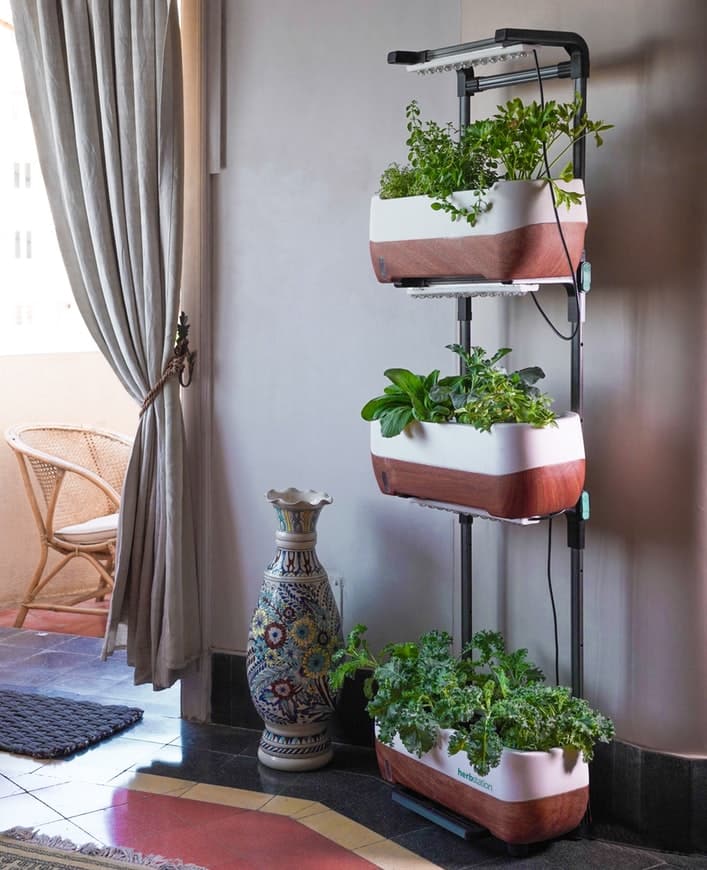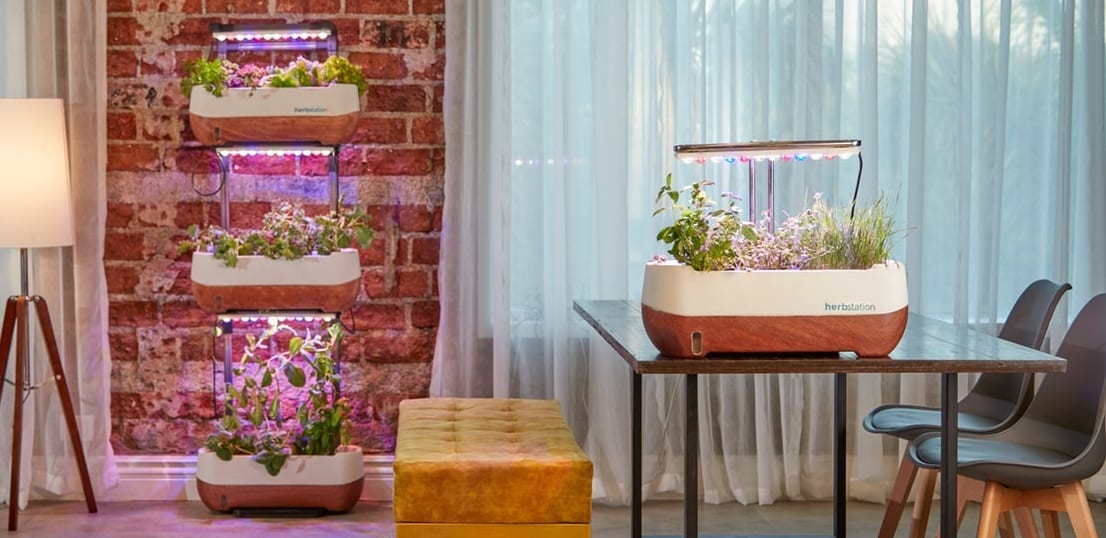If you’re planning to grow vegetables indoors, all on your own, for the very first time, then the very thought of the prospect itself can feel rather scary.
Not only do you have to think about fertilization, but have a strict awareness of the grow lights as well as the watering and harvesting schedules.
But let us help you out today with all your plant harvesting worries with a comprehensive guide on not just the various types of indoor grow lights, but the different steps of harvesting as well.
We will take you through some of the most popular light types out in the market today and which ones fit which specific purpose.
So, just sit back and read along.
What are the different type of glow lights that can be used to grow plants indoor?
Types of Glow Lights

-
CFL or Compact Fluorescent Lights
CFLs are by far the most common choice when it comes to growing and harvesting plants indoors without sunlight.
They are incredibly pocket-friendly and inexpensive and that is precisely the reason why they’re such a popular choice today.
However, CFLs are not as efficient as some of the more powerful light options and are primarily used for growing small vegetables and seedlings which need lower sunlight to grow.
Growing fruit is a huge problem with them as a result, and it is better to opt out of them if you’re looking to harvest larger plants.
On the other hand, CFL lights are just perfect if you’re looking to just get into the indoor plant growing, they are low heat, small in design, and can practically fit inside any space effortlessly.
-
Fluorescent Tubes
Out of all the light options on our list today, the fluorescent tubes are perhaps the easiest to use and install.
They are highly energy-efficient as well and run on the blue end of the light spectrum, making them the ideal pick if you’re looking for early vegetable growth and ‘over-wintering semi-hardy tender plants.’
Hence, if you’re starting your indoor plant harvest with either seeds or leafy greens then opting for fluorescent lights is going to be the wiser decision. And as they do not generate much heat (a lot like CFL in this regard), you can place these tubes over the plants without a single worry.
T5, T8, and T12 are the various models that you can find in the market today, with the T5 variant being the most popular and the most modern in design.
T5s are available in either a single, daisy-chainable strips or panel array, but each of them needs to be matched to particular fixtures of high output (HO) or very high output (VHO).
There are a variety of spectral distribution lamps as well, with ‘daylight’ and ‘bloom’ being the most common options. While daylight was used more for vegetative growth and over-wintering, bloom lamps, on the other hand, are more commonly used as side-lighting for flowering larger plants.
-
High-Intensity Discharge Lights
HID bulbs are the ones that employ the use of gasses inside their tubes to generate light.
They are much more popular among commercial greenhouses than for domestic purposes, to be honest. And as they have a much higher light output per wattage consumed, they are capable of generating incredibly efficient and intense light indoors, making them perfect for harvesting large plants, and even fruits.
There are primarily two types of usable HID lights in the market today: HPS (high-pressure sodium) and MH (Metal Halide).
-
-
MH
-
The MH lamps are amazing when it comes to vegetative growth. They give off a sort of bluish spectrum that contains some ultraviolet radiation, which apart from aiding in plant growth can help to curb the formation of mold along with combating pests and weeds.
MH lamps are quite helpful when it comes to promoting the production of essential oils in aromatic plants as well. So, there are indeed a lot of things that you can grow with this light option.
-
-
HPS
-
These bulbs, unlike the MH, emit a yellow-to-orange hue, which helps to stimulate the effects of the fall sun perfectly.
HPS is best used for growing flowers and fruits and can go rather well with MH bulbs to help you get the perfect combination and allow you to grow a variety of crops.

LED Grow Lights[/easyazon_link]
LED grow lights are some of the most light-efficient models out there. They are low-heat, and highly durable but not at all pocket-friendly, and this is why not many indoor plant harvesters opt for them.
Hence, instead of going for a complete LED setup, a lot of the commercial plant rearers use just one or two panels and utilize their efficiency to serve as a sort of supplement to the spectrum of their existing grow lights.
However, the above fact doesn’t mean that LED grows lights are not sold in full-spectrum at all.
There are a lot of full spectrum models out there which are capable of supporting both blue and red spectrum wavelengths which can work wonders when it comes to balancing out your plant’s overall growth.
Moreover, there is one particular aspect of the LED grow light industry that we absolutely love; and that is how they are coming up with newer and more efficient models almost every month.
As the days are going by, the latest LED grow lights are becoming more and more pocket-friendly and cost-effective. And we believe that sometime in the near future they will be quite popular among commercial and domestic crop growers alike.
-
Plasma Grow Lights
Well, we won’t be surprised if you just went ahead and scratched your head with a clueless expression on your face when you heard of plasma grows lights.
These variants of indoor plant growers are very new to the lighting technology and are even more expensive than most of the high-end LED grow lights that we find today.
Plasma grow lights are much more efficient than HID; they also boast a more durable body which allows them to provide longer lamp life and less depreciation.
They are quite impressive when it comes to vegetative growth, and their improved spectrum output will allow you to balance out your plants’ growth efficiently and effortlessly.

Useful Steps to Keep in Mind When Growing Plants Indoors
-
Selecting the right vegetables
Now, first things first. Before we go any further into the steps of growing plants indoor, let us just say that not all crops are capable of growing well in such conditions no matter how much care you take for its maintenance.
So, make sure that before you pick a plant to grow, you group it according to its light and moisture requirements as well as how tall it can grow in the near future.
Growing a plant whose care you will not be able to take is not going to be a wise decision at all.
-
Selecting the right containers
When it comes to finding the right containers for growing your plants indoors, you can either choose to opt for the more traditional planters and pots to make it feel as authentic as possible.
Or, you can just get some plastic storage tubes, some boxes or even crates and other similar items as they will work just as well as long as there is a water drainage hole at the bottom.
It’s highly important to pay close attention to the requirements of your plants. If the plant you’re growing needs a larger container, then it’s best to give it one even if it takes up a lot of extra space.
If you’re growing leafy vegetables and herbs, then picking 4-inch pots for them will fit their space requirements perfectly.
Now, if you’re looking to grow smaller varieties of tomatoes, then you will need one to two-gallon containers to help balance out their overall growth.
However, if it’s large Brandywine tomatoes that you’re harvesting, then you would require a five-gallon container instead.
Providing a plant with exactly what it requires is what is going to help you get a successful harvest going.
-
Selecting the right grow light
This is one point that we didn’t delve much into when talking about the different kinds of indoor plant grow lights.
Well, in essence, when it comes to a particular plant’s growth, not all lights are going to have the same effects on them. And more commonly there are two types of grow lights sold on the market, one being red/yellow and another blue/white
Now, blue/white lights are used majorly for compact, bushy growths, while the red/yellow ones tend to lean more towards creating the blooming effect in flowering plants that give fruits as they generate more heat.
However, these two are not the only types out there today. There are several different types that are not classified in terms of their color, and these lights vary in price and how efficient they are for different types of plant growth.
-
Getting your plants arranged
If you are seeding and not directly going for replanting seedlings, then make sure to put the seeds in their appropriate containers and then cover them with soil.
However, if you are using starter plants and saplings, make sure to carefully transplant them into new but clean containers with a drainage hole at the bottom.
And just like with the seeds, surround the saplings with soil as well, and don’t forget to mark the pot for what plant it is so as to avoid confusion in the future.
-
Installing the lights accordingly
Your plants and saplings need to be either under or around your growing lights so as to have more balanced growth.
You can make the entire process easier to follow by adding a timer to the entire setup so that you can ensure when to turn on the lights and when not to so that your daily routine is not hindered in any way.
Additionally, it’s always optimal to put the lights on adjustable chains, as you may need to move your crops higher as they grow.
When they are still in seed form or are saplings, then the lights should be close to the soil; however, during the time of harvest, you will need to move the light upwards a few inches depending on the particular type of plant that it’s lighting.
And though it’s important to switch off the lights every now and then when the plants are growing, when they are still in seed form, just make sure to keep the lights on continuously till it starts to germinate.
-
Watering and Maintenance
As you all know, plants will need a lot of care and maintenance, especially when grown in artificial conditions. And so, you will need to check periodically which of your crops need water and which ones don’t. As certain plants require more moisture and nutrients than others, you will need to have a strict watering and fertilization schedule to provide them with a balanced growing period.
But keep in mind to not over-water them or even add more fertilizer than the required amount as that can burn the plant and decrease its productivity.
Another aspect of indoor plant growing we would like to brush up on is pollination.
If you’re growing leafy vegetables, in particular, this will not matter all that much unless of course, it’s tomatoes and peppers. However, though this part may feel complicated, it isn’t all that difficult to achieve really.
And if you’re aware of the various steps, the process gets significantly easier. Just take a cotton swab and bad the end around each flower. This will help transfer the pollen from one plant to another, hence artificially doing the jobs of bees, birds, and wind.
-
Harvesting
The final step on our list today is harvesting.
So when it comes to making the most of your indoor crops, it pays to keep a chart that shows a definite timeline of which vegetable was planted and when. And as each crop has a definite harvesting time, the chart will help you identify which of the vegetables are ripe and which ones aren’t.
Happy Harvesting
Without the proper awareness and know-how, something as care-intensive as harvesting plants indoors can indeed become a very difficult task. There are so many things that can go wrong if the proper steps are not followed, so, we hope that our guide today was able to help you out with all your plant harvesting needs.
Till next time!
Related Articles
15 Air-Purifying Plants for a Healthy Home
24 Poisonous Garden Plants to Avoid [ With Pictures to Identify Them ]



